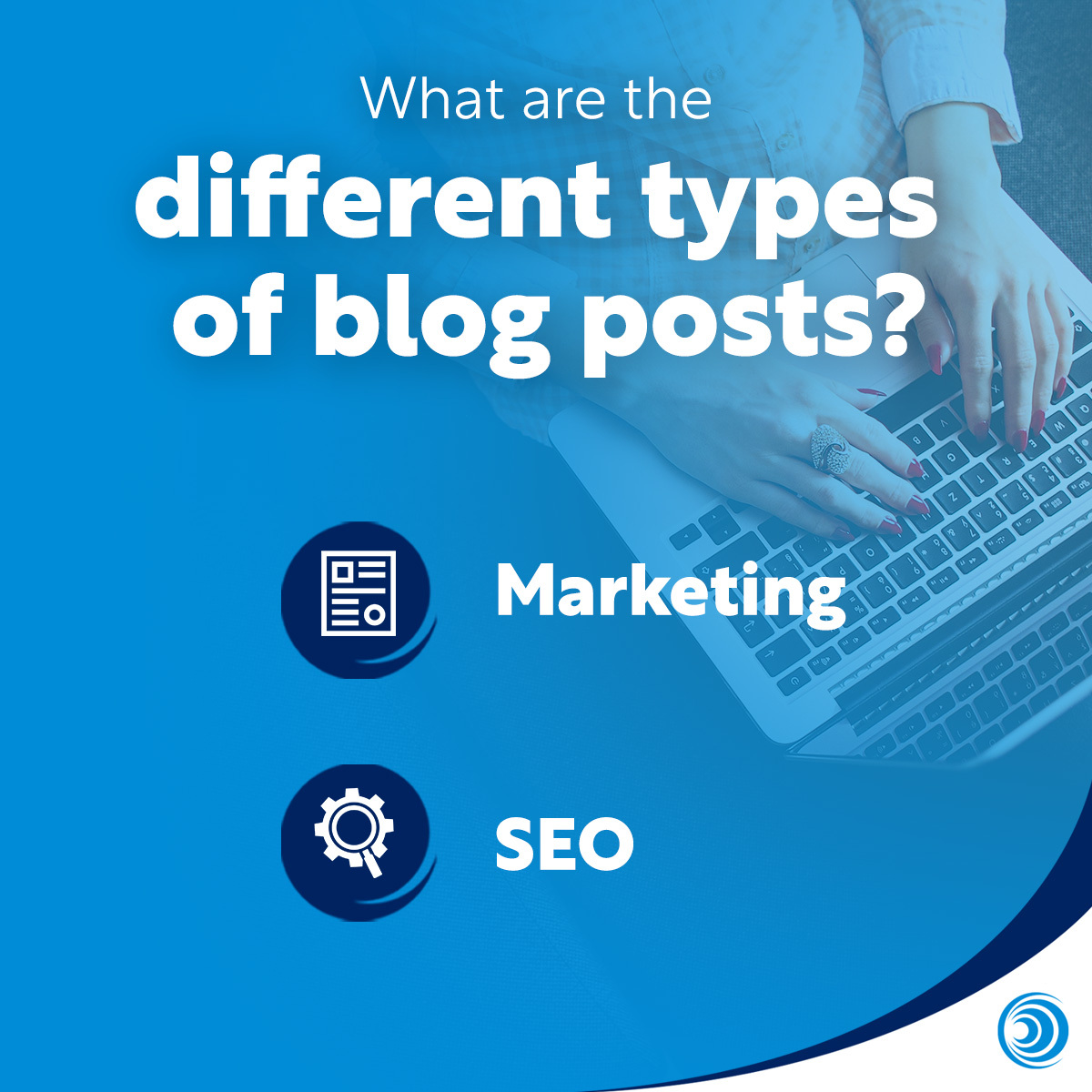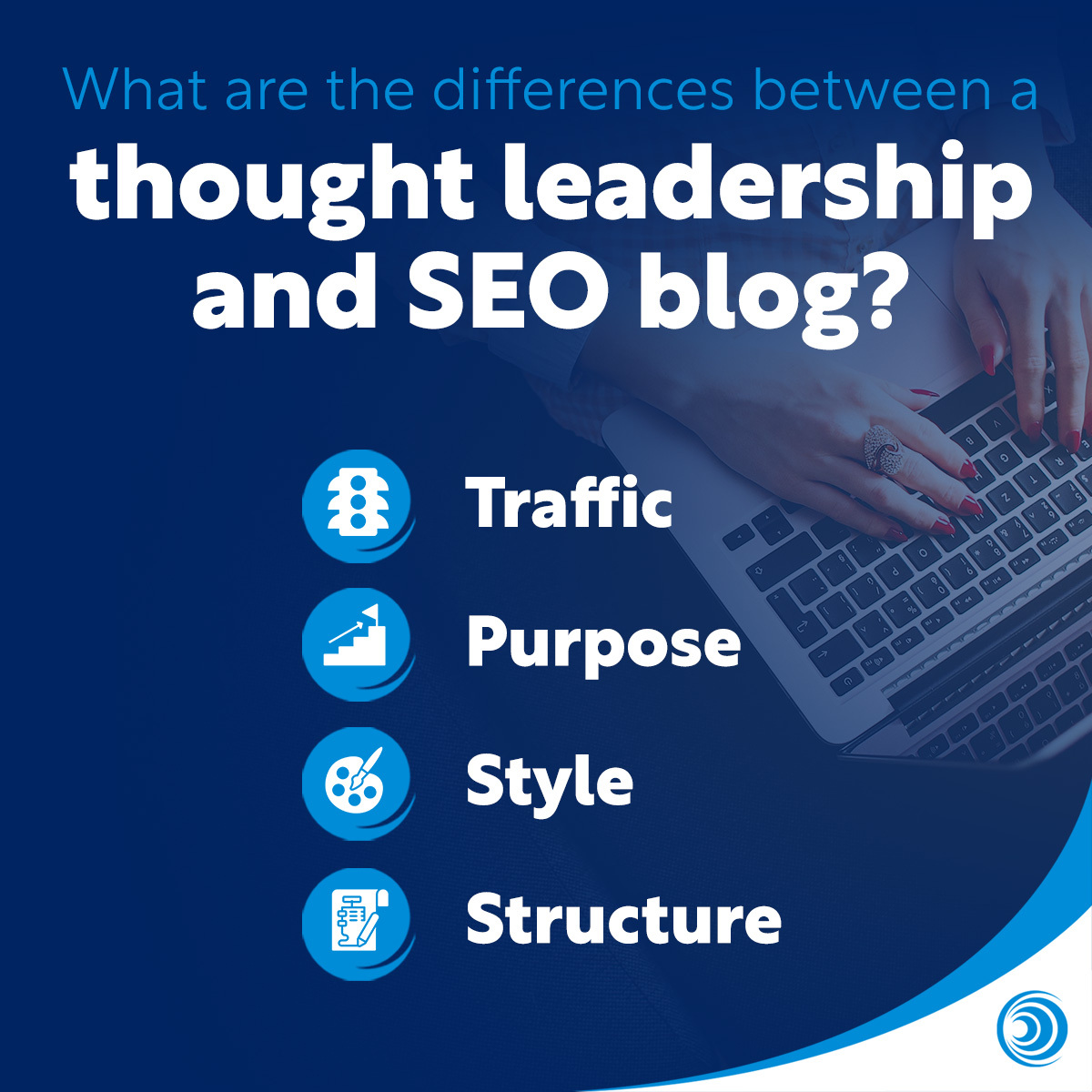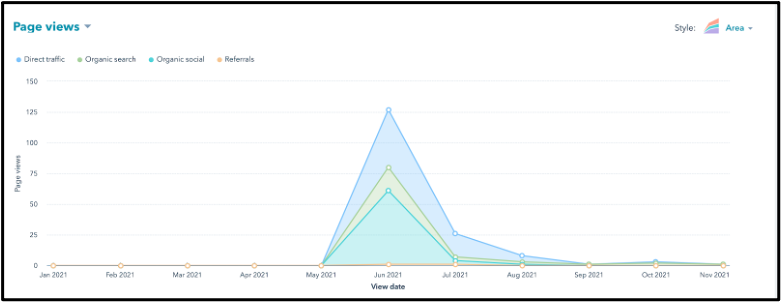- The Power of Reviews & Testimonials in Fintech Marketing - October 13, 2025
- The Best Fintech Newsletters to Keep You Informed & Inspired - October 8, 2025
- What Is SEO and Why It Matters For Fintech Companies - August 12, 2025
This is a deceptively simple blog title and you may think you know the answer. But this is a topic that can create confusion when executing a marketing strategy for our clients.
There are different kinds of blogs to serve different purposes and they are completely different in style and topic.
The biggest single distinction it’s important to understand is the difference between what we will call marketing blog posts and SEO blog posts.
This is something that is regularly misunderstood by people at all levels in marketing. It can even cause issues among senior stakeholders. In such cases, this can wrong-foot your plans, especially if you are starting to implement an SEO strategy.
First, let’s distinguish between blogs and blog posts.
What is a blog?
Here’s a quick history. A blog is a web page or online platform where individuals or organisations share blog posts.
The term ‘blog‘ was coined from the word ‘weblog‘ in 1997. In the early days of blogging, blogs were often seen almost as online dairies.
Today the phrase ‘personal blog‘ is sometimes used to distinguish this kind of blog from a ‘company blog‘.
What is a blog’s purpose?
Companies, organisations or influencers often use blogs as tools for marketing and promotion. Increasing website visitors is generally regarded as the goal.
They provide readers with information about the blogger or company, its products, services, news, or views.
Personal blogs are generally used for sharing thoughts, opinions or reviews. Some of these are monetised, too.
Whatever is produced needs to be high-quality content that is in-keeping with your brand.
What is a blog post?
A blog post is simply an individual post added to a blog page. They are also referred to as blog articles, articles or simply blogs.
They are generally formatted like articles, with headers, body text and images. Adding multimedia, such as audio and video files is increasingly popular, too.
Some blogs may also include detailed infographics, so working with a good graphic designer could be very useful.
Blog posts may be written by someone within a business or other bloggers as guest posts.
What’s the difference between a blog and a blog post?
A blog is the page where blog posts are posted. However, the term blog is often used interchangeably to refer to both.
So, when someone mentions a ‘blog‘, they might be referring to a blog or a blog post.
Blogs & blog posts need strategies
Assuming they are good-quality content, blog posts of all kinds have the potential to generate website traffic. This traffic can be monitored using tools such as Google Analytics and harnessed to bring quality sales leads.
But most don’t.
In fact, this applies to most pages on the internet in general. A study by Ahrefs found that over 90% of all webpages get no traffic at all. What you produce must become indexed pages in order to rank with Google.
Without a clear content strategy and understanding of the different roles blogs can play in your marketing, creating webpages or blogs can frankly be a total waste of time. You simply won’t be seen by search engines or achieve brand visibility.
What are the different types of blog posts?

Most people intuitively understand that there are different types of blog posts. But many haven’t considered exactly what they are.
Or more importantly, they don’t understand that you need a strategy to make them deliver the right kind of traffic to your site.
And it’s confusing when different types of blog posts are posted on the same blog pages, i.e., news and general marketing blog posts are often posted on the same blog listings page as SEO blog posts. But this isn’t necessarily a bad thing.
At the very top level, there are two main categories of blog post:
-
General marketing blog posts
-
SEO blog posts
These categories reflect the different purposes of each type of blog post. They can each be further subdivided, too.
1. General marketing blog posts
We define marketing blog posts as all blog posts other than those specifically designed to support an SEO strategy. They include the following categories.
1.1. Company news-related blog posts
Companies often post updates about themselves on their blogs. For fintech companies, these might include announcements about new products, expanding into new markets, investments, partnerships or hiring high-profile staff.
These ultimately won’t make a big impact on a website’s SEO. It is unlikely that search engine users are going to search terms that will lead them to these kind of blog posts.
(Think about it, would you ever google, ‘Company X’s successful Halloween fundraiser 2023’?)
However, they do have their place. It’s important to keep existing and potential customers informed about company news. They are good to show site visitors you are a dynamic, happening business, and you can promote those posts on social media.
Press releases
Press releases are sometimes shared on a company’s website or a third-party press-release website (or both).
They are used for relatively big announcements, usually with the goal of generating positive PR.
1.2. Thought leadership articles
Thought leadership articles (or opinion pieces, or op-eds) are articles written to provide insights, expertise or opinions on a particular subject.
They can be opinion-based as well as factual. They are typically written to educate or influence readers and – in the long-term – develop an audience.
There is a lot of scope for the writer or company to express its personality. The tone of voice, style and structure of their piece should aim to authentically reflect who they are.
Although there are some best practices (an eye-catching introduction, an average length, etc.), there is no universal structure or style to which the writer should adhere.
The target audience for thought leadership articles varies. It all depends on where they are shared and promoted. High-quality thought leadership content can be very effective in building brand loyalty.
2. SEO blogs
Search engine optimisation (SEO) is the art and science of making website pages rank highly in search engine results pages (SERPs) for relevant terms.
In other words, it’s the ability to get your website to rank higher than your competitors in the organic (not paid) search results when someone googles a related topic.
So, SEO blogs are blog posts aimed at reaching readers through search engines.
They can also be shared on various social media platforms, email newsletters, etc., and be found on blogs. However, the primary goal is for them to be found via search engine results pages (SERPs) – i.e., on the first page of Google.
They are often focused on educating and providing helpful information to users, not a hard sell or blatantly promoting the business.
But this aspect is not the primary focus or purpose of the blog’s content, even if the goal is to get leads from it. They are most effective when produced and published on a regular basis to systematically target specific keywords.
What are the differences between a thought leadership and SEO blog?

1. Traffic
When you ask ‘What is the purpose of a blog?’ most people’s first answer is probably ‘website traffic’.
But there are different kinds of traffic.
Thought leadership blog post traffic
Thought leadership blog posts typically get most of their readers shortly after they have been posted on social media channels and in newsletters.
Soon after, their traffic will drop. After all, how would new readers know about them?

Like posts on social media and email marketing, these blogs have a brief window to reach the relevant audience.
SEO blog post traffic
SEO blog posts are blog articles that are designed to be found via search engines.
They usually target one main keyword. But they can also rank for variations of the same keyword and other related keywords.
Once they have been posted, they might take some time to be indexed and ranked by Google.
Websites with higher domain authority have more chance of ranking blogs for difficult keywords. This is a vital point to understand.
If an SEO blog does manage to get to a high-ranking position, its traffic trajectory will be the opposite of a thought leadership blog’s traffic trajectory.
In other words, it will gain more traffic over time:

If it ranks highly, this kind of blog post can consistently bring in traffic year after year.
There are reasons why this traffic might fall – but there are solutions to those reasons, too:
-
Its ranking drops: Newcomers may target the same keyword, or existing competitors might update their content. Generally, a regularly updated website (where SEO blog content is selectively updated) will help avoid this outcome
-
The search volume for the keyword declines: Sometimes this means users are searching for different terms. You can work this out by checking competitors or by analysing impressions in your analytics data
2. Purpose
Besides traffic and leads, the purpose of a good blog also varies according to the publisher’s goals.
Thought leadership blog purpose
The primary purpose of thought leadership blogs is to create immediate engagement and raise brand awareness. This applies to both existing and potential customers.
Secondary to this, it is to grow social media or newsletter followers. These could be potential customers.
Finally, they help raise or maintain profiles within an industry.
Thought leadership pieces are often focused on current industry trends that should be closely aligned with your service capability. So, they are good for associating your brand with emerging themes, technologies, and/or service types.
They have a short-term lifespan. But this doesn’t mean they can’t also be useful for long-term marketing strategy.
Besides raising brand awareness with a target audience, they should also refresh awareness among people who have previously heard of you.
In marketing science, the technical term for this increasing mental availability and refreshing memory structures.
SEO blog purpose
The purpose of SEO blog posts is to gain more visibility, traffic and leads from prospective customers.
The brand’s visibility and traffic need to be with a relevant audience in order for it to bring leads.
Unlike thought leadership pieces, the first step of a successful blog post for SEO is keyword research. Before you even begin blogging, you need to know which keyword you should target.
Keywords are words or phrases users are searching for. For each keyword, several things need to be considered, including:
-
Keyword search volume: how many people search this keyword per month
-
Keyword difficulty: how easy or difficult this keyword is to rank content for
-
Keyword search intent: What type of content needs to be created for this keyword? A blog post, a landing page, or something else?
Early on, websites should target keywords with relatively low difficulty. These keywords tend to call for ‘top of funnel content’.
These initial blogs might not bring many (or any) leads, or even mention your service. And they might have quite low traffic, too.
Targeting easier keywords helps you build up your domain authority.
This is an approximate metric estimated by SEO software (such as Ahrefs, Semrush or Moz). Websites with more traffic, backlinks, and ranking keywords will have higher domain authority.
And this is a very important point. Those early blogs are likely to be on topics that are so basic that other stakeholders in your business may ask: ‘why are you bothering to write about that?’
However, without ranking for those keywords, you won’t be able to progress to more difficult keywords. Therefore, it is important that you explain the difference between an SEO and a marketing blog to your stakeholders.
In short, it means you need to build from the bottom upwards, not downwards from the sexy keywords that you may want to be associated with.
3. Style
Both kinds of blogs require good copywriting. But SEO blog posts need to emphasise writing short and concise sentences more than thought leadership pieces.
This is because the readers of SEO blogs want and expect structured information, whereas the readers of thought leadership articles are more open to opinion and freeform thought.
4. Structure
Thought leadership blog posts don’t have any specific structural requirements.
Shorter content is more likely to be read and digested entirely. Using interesting headings and graphics will help keep readers on-page and engaged with your narrative.
SEO blog posts, on the other hand, need to be structured carefully. They need to logically order the information to meet search intent.
You also need to design and write your blog or article with the specific intention to rank higher than your competition for the same keyword.
This means you need to understand their content and its structure. And, even more importantly, you need to deeply understand the subject you are writing about.
Conclusion
It is important to make sure everyone in your marketing team (and potentially senior stakeholders) understand the purpose of the blogs you produce.
Knowing the difference between blogs (where content is posted) and blog posts (the content posted on blogs) is helpful, even though these terms are often used interchangeably.
It’s even more important to understand the difference between different types of business blog, especially marketing or thought leadership and SEO blogs.
Thought leadership blog posts are relatively freeform articles on subjects related to your expertise or interests. They don’t target specific keywords and gain most of their traffic via your social media or newsletters.
SEO blog posts target quality leads and new customers. They exist to capture people who may not know your business but are searching for keywords related to the service you provide.
All types of blog articles need to be produced as part of an overall content calendar and strategy.
For an effective SEO strategy, you need to find keywords that have the right keyword difficulty and amount of traffic to be worth targeting. This depends on your website’s domain authority.
For a rounded approach to your marketing, you should write both kinds of blog posts simultaneously.
SEO blog posts will help you find new customers while marketing blog posts will be your opportunity to talk about the latest trends, attract a social media following and refresh memory structures among existing customers.
